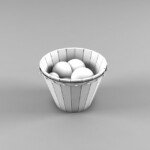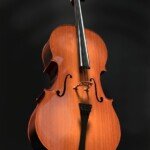Unlock Creativity: Your Affordable CNC Router Guide for Under $500
CNC routers have felt like industrial giants over the years, out of reach for amateurs, manufacturers and small workshops. But the landscape has changed dramatically. Today, with machines that cost less than $500, dipping your toes into the world of computer-controlled cutting and engraving is easier than ever. Although they won’t deal with heavy-duty steel production, these entry-level wonders open up creative possibilities for wood, plastic, foam and soft metal. Let us explore what you can achieve on budget and what you are looking for.
Why consider using a $500 CNC router?
Affordable CNC router is the perfect portal. They allow you to:
- Learning rope: Master CAD/CAM software, tool paths and machine operations, no significant investment.
- Execute small projects: Create complex logos, custom plaques, detailed inlays, PCB prototypes, personalized gifts and unique ornaments.
- Prototyping and testing: Quickly iterate small-scale designs before committing to larger production or outsourcing.
- Unlock creative hobbies: Dig into woodworking, model making, role-playing prop creation or custom engraving.
Understand reality (expectations within this price range)
Seek truth. Routers under $500 are usually:
- Smaller workspace: The expected cutting area is usually between 100x100mm (4×4") to 300x300mm (12×12"). Large projects are out of scope.
- Reduce power: The motor is smaller. They handle soft woods (Balsa, pine), acrylic, plastic, foam, engraved aluminum and PCB grinding. Hardwood or deep cutting requires very slow speeds/multiple passes and can tiring the machine.
- Set-based or simple design: Many kits are kits that require assembly and calibration. Pre-built units may use less reliable materials such as acrylic frames or thin aluminum extrusions. Rigidity is a key limitation.
- Hobby level components: Basic linear guides/bearings, NEMA 17 stepper motors and simple spindle seats are desired.
- interface: Usually connected via USB to a dedicated computer running open source software (such as a dedicated computer paired with UGS, CNCJS, or CAM compatible).
- noise: They can be big.
Key factors when choosing an entry-level machine
Before purchasing, please consider carefully:
- Building area: Measuring your typical project needs. Is a 10x10cm engraver sufficient, or does it require a 30x30cm mini engraver?
- Spindle power and type:
- DC brushed spindle: Common in this range (e.g., 775 motors of 12-24V). Lower power, lower accuracy (hopping), air-cooling (possibly noisy).
- Install the router: Some models are design To accommodate a very small decorative router (such as Dremel or Proxxon). This offers more power and bit options, but adds to the cost under $500.
- Framework construction: Look for thicker extrusions and metal plates as much as possible. Acrylic frames are affordable but are prone to bending and cracking.
- Control software: What controller does it use (GRBL is everywhere)? Is it compatible with the free/open source software you plan to use? Easy to set up.
- assembly: Are you satisfied with the complex assembly and calibration? Suite builds provide learning, but takes time.
- Material: Make sure the machine can cut the specific material you are interested in (for example, PCB functions require very precise Z-Height Control).
What can you do In fact Do it with one person?
These machines shine in specific fields:
- Precision engraving: Beautiful design of wood, slate, coated metal, plastic.
- Complex 2.5d engraving: Relief engraving, decorative panels, textures.
- Thin cutting materials: Thin plywood, MDF, acrylic sheets, foam for model/packaging.
- PCB Milling: Prototype electronic circuit.
- Detailed logo production: Small custom logos and plaques.
(Popular Examples – Illustrative – Models change rapidly)
- Type 1: Compact laser/cutter hybrid (kit): Usually found around $200-400, combining diode laser engraving/cutting with basic cutting spindles. Great for engraving and very lightweight cutting/PCB work. The rigidity is usually very low. (Example Style: General "3018" variant).
- Type 2: Dedicated Mini CNC Router (kit and pre-assembled): Pure focus on routing, usually better than hybrids. Provides a slightly larger working area (e.g., ~300x300mm). Unless designed for small decorative routers, spindle power remains a constraint. (Example Style: Enhanced "3020" or "3040" size). Finding a real pre-assembled version under $500 requires a diligent search.
Conclusion: Stepping stones are accurate
Affordable CNC routers under $500 are incredible tools to unleash creativity and learn the foundation of CNC machining. They democratized access to previously overstimulating technologies. Understand their limitations (mainly rigidity, power and the size of workspace), and you will bring digital design to your body on a small scale while bringing it to your physical life. They excel in complex details and soft materials.
The leap to a professional machine becomes crucial when your vision exceeds the countertop or requires precision, speed and production-grade materials such as aerospace aluminum, titanium or tough engineering plastics.
At Greatlight, we operate at the peak of the CNC spectrum. As a professional five-axis CNC machining manufacturer, we use cutting-edge equipment and advanced production technology to solve complex metal parts manufacturing challenges. Our expertise includes meticulous High-speed machining centeradvanced Multi-toxic processingand precision Turning centerable to handle the toughest materials with incredible precision (+/- 0.0005"). From prototype to production, we provide a comprehensive range of One-stop solution Includes complex post-processing and sorting services.
Is searching for more than just a hobby project? Whether it is complex aerospace components, robust medical implants, or high-resistance automotive parts in materials such as titanium, inconel, inconel, stainless steel or advanced composites, 5-axis CNC machining Features provide unparalleled dimensional accuracy and surface quality. We specialize in research Custom precision machining Solutions and commitment to quality, consistency and Quick turnaround time.
Ready to see what industrial-grade precisions can be achieved? Customize the precision parts now at the best value! [Optional: Link to GreatLight Website Contact/Quote Page]
Frequently Asked Questions about Affordable CNC Router $500 (FAQ)
Q1: Yes real Cut metal with a $500 CNC router?
one: Very careful, slowly, yes, but only Soft Metals such as thin aluminum (engraved/milling circuits), brass or copper plates). Deep cutting, hard gold (steel) or large capacity is impossible. Use very light shear depth, slow feed rate, proper coolant/wax and safe labor. It will deal with the machine very much.
Q2: At this price point, is it better to spindle or install a router?
one: If the machine is design To accept a small high-quality decorative router (such as Proxxon, which adds cost), it usually provides power, less vibration, better accuracy and a wider position than an integrated DC brush spindle. If equipped with a spindle, determine the wattage and check the comments for the jump problem.
Q3: How difficult is it to set up and operate these kits?
one: Looking forward to the learning curve! The kit requires mechanical components, wiring, careful calibration (square the shaft, wrapping the spindle), installation of software (controllers like GRBL, senders like UGS/CANDLE, CAM software, etc.), and learning the basic G-code foundation. The pre-assembled unit simplifies hardware setup, but software learning remains.
Q4: What software do I need?
one: You need two main types:
- CAD: To design your parts (Free: Fusion 360 for personal use, Freecad, Libricad; Paid: Vcarve desktop/hobby).
- CAM: Generate tool paths from CAD models (usually bundled/integrated: Fusion 360 CAM, VCARVE; FREE: ESTLCAM, Carbide Create).
- Control software: Send G code to machine (Free: Universal Gcode Sender (UGS), CNCJS, Candle, Chilipeppr).
Question 5: What is the ongoing cost?
one: Budget:
- Tools (bits): Various end mills (diameter, profile), engraving position. High-quality debris has made huge changes.
- labor force: Fixture, double-sided tape, vacuum table swaying.
- maintain: Lubricant, replace worn bearings or belts.
- Material: Wood, plastic, metal plate.
- (Optional) Accessories: Dedicated workspace, dust collection/vacuum collection, safety glasses/ear protection.
Question 6: Can I use it for small businesses?
one: Yes, if Your products are perfectly aligned with the machine’s functions (small, complex prints, ultra-thin material cutting, small PCB prototyping). Production speed and material versatility will be limited. Best for unique small batch crafts. Expansion will require investing in more robust machines.
Question 7: Where can I find project planning and support?
one: Popular amateur CNC forums (e.g. CNCZONE section, Reddit R/hobbyCNC), manufacturer community (e.g. Shapeoko, Stepcraft), YouTube channels and dedicated websites, provide a wealth of project ideas, troubleshooting tips and mods for small machines. GreatWhile focusing on industrial CNCs, insights can also be gained from their in-depth machining expertise in material properties and optimization tool paths, sometimes informing small-scale work.

















